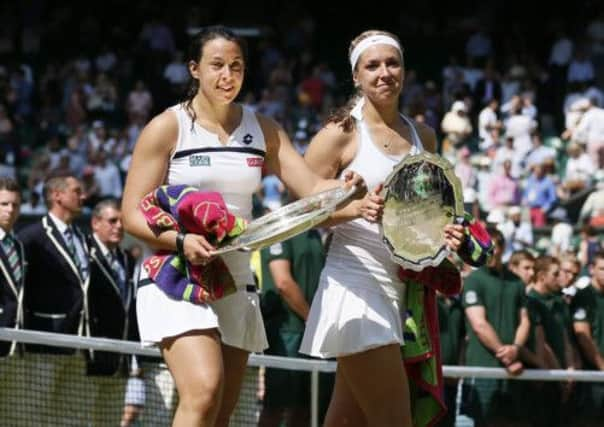Jane Devine: Wimbledon prize money and equality


The tournament itself has now been run 127 times by the All England Club and since the first Wimbledon championships in 1877 – at which 22 male players competed in front of a crowd of just 200 – there have been some interesting changes.
Defending champions no longer get an automatic bye into the next year’s final. This rule, abolished in 1922, had led to the same people winning Wimbledon again and again as they were able to rest while waiting for their opponent to emerge from the gruelling tournament. Wimbledon is now anything but predictable.
Advertisement
Hide AdAdvertisement
Hide AdWimbledon and the All England Club have also responded to calls to treat the sexes equally. Firstly, with the introduction of female players in 1884; and in 2009 the outdated, confusing practice of referring to married female players by their husband’s initials and surname was stopped.
In 2007, though, there was an interesting development around prize money, likely done in the name of equality, but which may actually have put feminism and equality for women in sport back a few steps instead.
Up until that time, women received lower amounts of prize money than men, with the winners in 2006, Roger Federer and Amelie Mauresmo, taking home £655,000 and £625,000 respectively.
The cool reception this provoked from some men was not justified: while women do spend approximately half the time of their male counterparts on the court, playing the best of three, not five, sets, the prize money was not indicative of effort. Had it been so, women would have received half, not just a nominally lesser amount.
So, in that respect it was right to get rid of this anomaly, but awarding equal prize money may not have been the best solution. Equality for women is about equality of opportunity, it is not about being treated better than others. So instead of demanding equal money for lesser effort, how about the same money for the same effort? Why don’t women play the best of five sets too?
We run marathons – the full 26.2 miles; we play football – the full 90 minutes. Women play cricket, box, ride in the Grand National, we even climb Everest. We can do all that.
Yet in sport there remain many things we are excluded from, including the Tour de France, with its peloton of all male riders, currently taking place.
Tennis is light years ahead of many sports in its treatment of women; but when a twisted interpretation of equality leads to a situation where we applaud women getting paid the same for lesser work, we weaken the very arguments we need to break into the other bastions of male dominance.